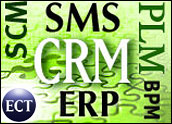
Recent research from the Aberdeen Group titled “Channel Sales: Renaissance in Partner Management” explored the challenges, strategies and tactics from 220 organizations that rely on indirect channel partners, distributors, and retailers to drive top-line revenue. Sixty-three percent of companies indicate that partner/agent management has a moderate to severe impact on organizational effectiveness.
Significantly, the research revealed that top performing organizations were far more likely to support cross-selling and up-selling within the channel, allowing these organizations to extract demonstrably higher value from current customers and a steadfast dedication to a handful of “high performing” partners.
New Take on Channel Relationships
In the context of this study, Best-in-Class were purely defined by the top 20 percent of participants who achieved the highest annual channel revenue growth and the highest increase in average order value. As the title of the research suggests, organizations are rethinking how they support channel relationships, particularly in light of recent economic conditions.
Simplicity and communication are the key to growing the number of active high-performing partners. The top pressure causing all companies to focus on channel optimization and investments was the desire to increase channel revenue (88 percent).
All organizations strive to maximize investments in the channel, but the research reveals that the highest-performing organizations have unique processes and technologies that support superior channel performance.
Best-in-Class have an aptitude for driving significantly higher transactions through the channel, many in the form of cross-selling and up-selling opportunities. In fact, Best-in-Class demonstrated lower average order values from channel partners compared to Industry Average organizations (the middle 50 percent of performers), but achieved significantly higher annual channel revenue per channel partner, which means these organizations have found a way to drive demonstrably higher transactions through channel partners.
Over 80 percent of all respondents used partner relationship management technology. While technology may be an enabler, it’s certainly not a differentiator between Best-in-Class and All Other organizations. The average organization has been using partner technology for two to three years. Research suggests that part of the “renaissance in partner management” stems from organizations reverting back to the most basic elements of partner management technology and placing significantly more weight on identifying high-value partners and servicing them accordingly with sales and marketing support.
Key Capabilities
The top two strategies to increase channel revenue for Best-in-Class organizations include recruiting new partners (52 percent) and focus on growing business from existing customers (38 percent) (in the form of cross-selling and up-selling opportunities). Three key capabilities enable cross-selling and up-selling in the channel for Best-in-Class organizations:
- Tiered marketing support for higher-performing partners (Best-in-Class were 1.8 times more likely than Laggards to leverage this capability)
- Ability to uniquely identify channel customers for cross-sell and up-sell opportunities (Best-in-Class were 1.4 times more likely than Laggards to leverage this capability)
- Ability to share all sales and marketing materials with partners (Best-in-Class were 1.5 times more likely than Laggards to leverage this capability)
First, Best-in-Class demonstrate deep visibility into channel partner performance, down to the ability to track an individual lead within the channel. Over 30 percent of Industry Average organizations also have this capability, but Best-in-Class actually have processes in place to act on the data they collect, which allows them to support the highest-performing partners with corporate marketing support and maximize the return on MDF (market development funds) or COOP funds. This enables the highest-performing channel partners and limits the amount of resources wasted on inactive partners.
Second, Best-in-Class turn to technology to support the distribution of content in the channel. Sixty-two percent of Best-in-Class organizations have a centralized resource library or partner portal. Best-in-Class are also moving toward self-directed partner portals — with 91 percent of Best-in-Class already using them or planning to use them in the future.
Gaining Leverage
One of the biggest challenges with partner portals is actually getting partners to leverage the resources on the portal. When asked how effective their partner portals were, 69 percent of all organizations indicated “somewhat effective.” Interviews with respondents revealed that a best practice in partner portal usage includes integration of incentives and incentive management on the actual portal. In other words, extend the value of the partner portal beyond a simple resource repository.
These capabilities are typically provided by more advanced Partner Relationship Management (PRM) technologies. However, historic trends from year-over-year research actually show a move away from more robust PRM tools in lieu of simplifying the value prop to partners. Best-in-Class reveal it’s about serving the partners as much as it’s about serving customers. While it may seem painfully obvious, communication with the channel is ultimately the key to increasing channel performance. So, ask channel partners what they want.
When it comes to channel management, you get what you put in. Best-in-Class reveal best practices and suggested methodologies for maximizing channel performance. Always make sure that technology does not increase the partner workload or cause them to double enter data. Integration with existing tools becomes increasingly important, especially when it comes to gaining visibility within the channel.
Ultimately, Best-in-Class prove that a handful of high-performing active channel partners and dedicated internal resources for supporting these partners can deliver far greater value than merely increasing the number of total channel relationships. Cross-selling and up-selling in the channel is a HUGE challenge, but Best-in-Class reveal it can be done effectively by supporting channel partners with tiered marketing support for high-performing partners and a “back-to-the-basics” approach to PRM technology.
The Aberdeen report, “Channel Sales: Renaissance in Partner Management,” is available for free on the Aberdeen Web site.
Ian Michiels is a senior research analyst at the Aberdeen Group. Michiels covers marketing management and digital marketing in the Customer Experience Management Group. He can be reached at [email protected].























































